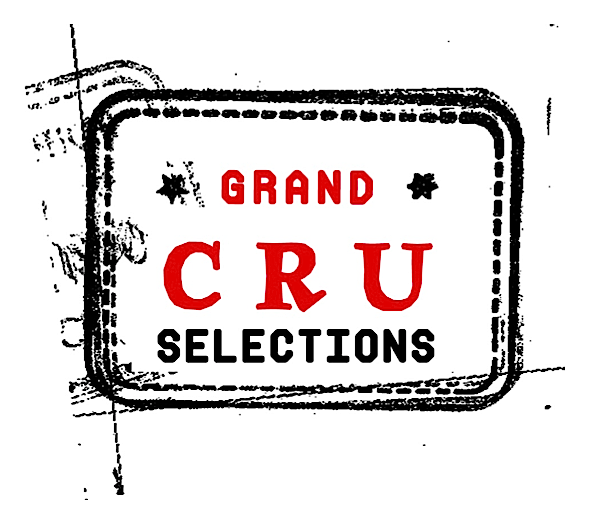Château Lafleur
Pomerol, Bordeaux, France
The Guinaudeau Family
Since its foundation by Henri Greloud in 1872, Chateau Lafleur has been owned, managed, and most importantly, farmed by five successive generations of the same family. The Guinaudeau family are the real deal when it comes to vine growing. Fashions do not hold any weight here. It is all about the vines, the soils and the individuals who craft these wines of purity and balance.
We jumped at the opportunity to work side by side with Sylvie, Jacques, Julie, Baptiste, and the entire Guinaudeau family, vine growers of the six prestigious vineyards of Société Civile du Château Lafleur, who share with us, the same spirit and ethos of authenticity, pursuit of excellence and a deep love and respect for terroir.
-
The story of Château LaFleur starts with Henri Greloud, who owned Château Le Gay and was the first to produce single-vineyard wines in Pomerol. In 1872, he purchased one plot of 4.5 hectares of vines and began a complete restructuring of the vineyard, built the house and the cellars and called this place: Lafleur. In 1930s, Andre Robin worked to develop Bouchet (Cabernet Franc) massale in the vineyards. Their daughters, Therese and Marie Robin took over after Andre’s death in 1946 and kept things relatively the same for almost 40 years until 1984 when Jacques and Sylvie Guinaudeau, the great, great-grandchildren of Henri Greloud made arrangements to lease Chateau Lafleur from Marie Robin, the surviving sister. They got to work in 1985, replanting a quarter of the vines, and, when Marie Robin passed away, the Guinaudeaus sold their rights to Le Gay for afford the full ownership of Lafleur in 2002. Later that year, Baptiste Guinaudeau (son to Jacques and Sylvie) and his wife Julie joined them at Chateau Lafleur.
-
Château Lafleur is a 4.5 hectare property located on the northern crest of the plateau of Pomerol directly adjacent to Château Petrus and contiguous to Petrus, Le Gay, Vieux Château Certan and Hosanna.
Toward the north and west, there is thinner gravel hillock over brown clay. Along to the south, soils change to sandier soil over a gravelly-brown clay sub-soil. And eastward, the soil is predominantly gravel.
-
For nearly 40 years, sisters Marie and Thérese Robin Greloud remained decidedly old-school - everything was done by hand with small tools, and plowing was done with an ox until 1979. Chemicals or pesticides have never used on this land.
There are 24 separate parcels, with vines of Cabernet Franc (Bouchet) and Merlot interplanted in each block. The average age of the vines is 40 years old. They have the highest elevation for Cabernet Franc in the appellation, and highest percentage used in their wines. To repopulate the vineyard, all the old vines were grafted with massale selection by hand. They never purchased Merlot clones, and by doing so, Lafleur has some of the oldest vines in Bordeaux.
Today, the soils at Lafleur are never turned, allowing the stones to remain in place, radiating heat to the vines. Deep soil cutting close to the vines does happen to encourage the roots to seek lower nutrients.
-
Traditional vinification - fermentation in a mix of stainless steel and cement vats depending on the cuvée. Malolactic fermentation is carried out. Aging in barrel between 14-18 months depending on the cuvée.
Wines
CHÂTEAU LAFLEUR
53% Merlot, 47% Cabernet Franc planted on 4.5 hectares plot of gravel-rich clay and limestone. Vinified in concrete and finishes malolactic fermentation in barrels. Generally 25% new oak with the remainder of the used barrels come from the sister estate, Grand Village.
LES PENSÉES
60% Merlot, 40% Cabernet Franc (Bouchet) Produced since 1987, this cru reveals a different geological expression of the vineyard of Lafleur, translated through the great clay terroir of Pomerol instead of Lafleur’s mighty gravel. This small 0.7 hectare parcel is is at the center of the Lafleur property with deeper soils ranging from sandy silt to clay and brown sand and less gravel - richer and deeper, and more typical to the soils of Pomerol. The wine is aged for 18 months in barrique (50% new).
LES PERRIÈRES
59% Cabernet Franc (Bouchet), 41% Merlot - this cuvée was born in 2018 vintage after years of experimentation by Baptiste and Julie Guinaudeau to best showcase the unique Bouchet de Lafleur planted on the fossil-spotted limestone soils of Fronsac. The vineyards are perched 83 meters above the Dordogne river (nearly twice the elevation of Lafleur). Fermentation in stainless steel/concrete tanks with soft maceration and moderate tannin extraction. 15 months barrel aging(1/3 new oak and 2/3 one-year-old barrels).
LES CHAMPS LIBRES
Blend of mostly Sauvignon Blanc (cuttings from Sancerre) with small percentage of Semillon in some rare years, Les Champs Libres was created in 2013 by Julie and Baptiste Guinaudeau. This is a 4 parcel blend from the limestone soils of Fronsac : À Louima, Les Pêchers, Les Acacias, Mathilde.
Vinification: Direct press into new barrels. Eight months aging on the fine lees, including 5 months of gentle lees-stirring.
CHÂTEAU GRAND VILLAGE BORDEAUX SUPÉRIEUR ROUGE
81% Merlot, 19% Cabernet Franc. Sourced from the Guinaudeau family's sister property, a 50 hectare estate is situated in Mouillac, within Fronsac, with 14 hectartes of vineyards repopulated from Lafleur vine cuttings. Vinification: Fermentation in stainless steel/concrete tanks with soft maceration and moderate tannin extraction. 12 months barrel aging (30% new oak, 40% one year old barrels, 30% two years old barrels).
CHÂTEAU GRAND VILLAGE BORDEAUX BLANC
Created in the early 1990s, after family reflection on the great terroir for white wine at Grand Village. 2.3 hectares of clay-limestone soil, planted with Sauvignon Blanc cuttings from Sancerre. 70 to 80% Sauvignon Blanc and 20 - 30% Semillon, depending on vintage. Vinification: Fermentation in 50% stainless steel tanks, 20% new barrels, 30% one year old barrels. Eight months barrel aging, including 5 months of gentle lees-stirring.

